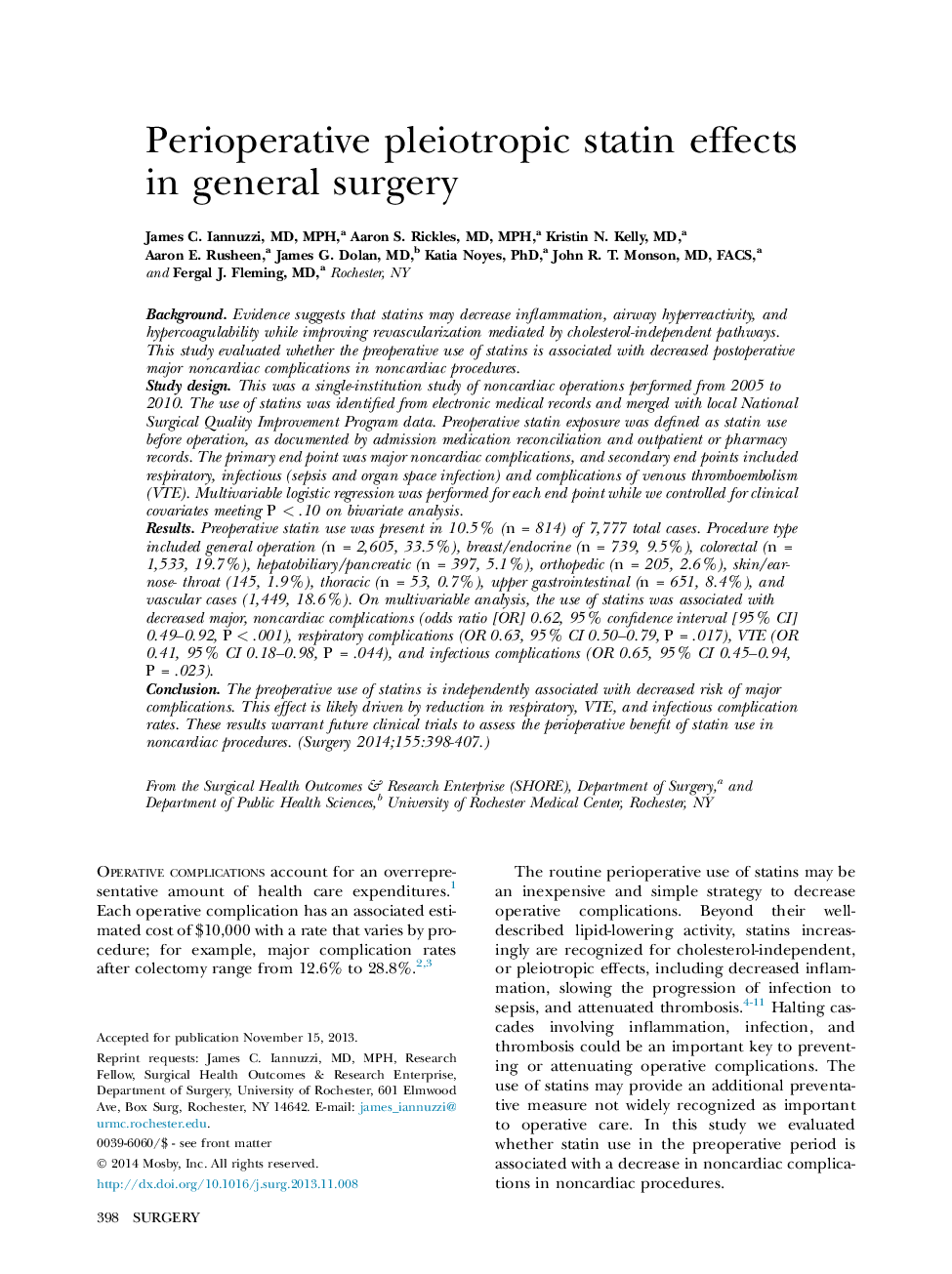| Article ID | Journal | Published Year | Pages | File Type |
|---|---|---|---|---|
| 6255561 | Surgery | 2014 | 10 Pages |
BackgroundEvidence suggests that statins may decrease inflammation, airway hyperreactivity, and hypercoagulability while improving revascularization mediated by cholesterol-independent pathways. This study evaluated whether the preoperative use of statins is associated with decreased postoperative major noncardiac complications in noncardiac procedures.Study designThis was a single-institution study of noncardiac operations performed from 2005 to 2010. The use of statins was identified from electronic medical records and merged with local National Surgical Quality Improvement Program data. Preoperative statin exposure was defined as statin use before operation, as documented by admission medication reconciliation and outpatient or pharmacy records. The primary end point was major noncardiac complications, and secondary end points included respiratory, infectious (sepsis and organ space infection) and complications of venous thromboembolism (VTE). Multivariable logistic regression was performed for each end point while we controlled for clinical covariates meeting PÂ <Â .10 on bivariate analysis.ResultsPreoperative statin use was present in 10.5% (n = 814) of 7,777 total cases. Procedure type included general operation (n = 2,605, 33.5%), breast/endocrine (n = 739, 9.5%), colorectal (n = 1,533, 19.7%), hepatobiliary/pancreatic (n = 397, 5.1%), orthopedic (n = 205, 2.6%), skin/ear-nose- throat (145, 1.9%), thoracic (n = 53, 0.7%), upper gastrointestinal (n = 651, 8.4%), and vascular cases (1,449, 18.6%). On multivariable analysis, the use of statins was associated with decreased major, noncardiac complications (odds ratio [OR] 0.62, 95% confidence interval [95% CI] 0.49-0.92, PÂ <Â .001), respiratory complications (OR 0.63, 95% CI 0.50-0.79, PÂ =Â .017), VTE (OR 0.41, 95% CI 0.18-0.98, PÂ =Â .044), and infectious complications (OR 0.65, 95% CI 0.45-0.94, PÂ =Â .023).ConclusionThe preoperative use of statins is independently associated with decreased risk of major complications. This effect is likely driven by reduction in respiratory, VTE, and infectious complication rates. These results warrant future clinical trials to assess the perioperative benefit of statin use in noncardiac procedures.
